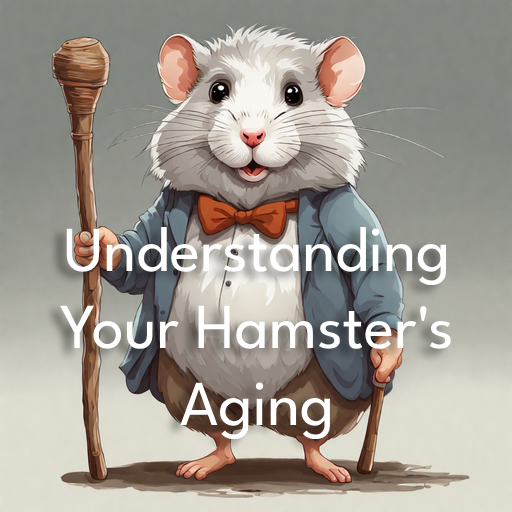Hamsters are sensitive creatures, and various factors can trigger stress in them. Understanding what these stressors are and how they affect your hamster is the first step to providing a comfortable environment.
Recognizing Hamster Stress Signs
Being able to identify stress in your hamster is crucial for their well-being. Stress can manifest in various signs, both behaviorally and physically.
Behavior signs may include:
- Excessive Hiding: If your hamster spends more time hiding than usual, it could be a sign of emotional stress. They might feel overwhelmed or unsafe in their environment.
- Increased Aggression: Stress can lead to changes in behavior. If your hamster becomes more aggressive, it might be their way of reacting to stressors.
- Listlessness: An emotionally stressed hamster might appear lethargic, uninterested in their surroundings, or less active.
- Changes in Vocalizations: While hamsters aren’t known for making a lot of noise, any sudden changes in vocalizations or constant squeaking could be a sign of distress.
- Repetitive Behaviors: Hamsters may engage in repetitive actions like bar-biting, which can be a way to cope with stress.
Physically, stress can manifest as:
- Fur Loss: Excessive fur loss or patches of missing fur can indicate a stressed hamster. This is often a result of over-grooming, which hamsters might do when they are anxious or uncomfortable.
- Changes in Fur Condition: Stress can lead to a hamster’s fur becoming dull, matted, or rough. Keeping an eye on their fur’s condition can provide early clues to any stress-related issues.
- Weight Fluctuations: Stress can affect a hamster’s appetite. They may either lose or gain weight due to changes in eating habits. Weighing your hamster regularly can help you monitor these fluctuations.
- Skin Irritations: Stress can weaken a hamster’s immune system, making them more susceptible to skin issues. If you notice sores, scabs, or red patches on your hamster’s skin, this could be stress-related.
- Digestive Problems: Stress may lead to digestive troubles, causing symptoms like diarrhea or constipation. Keep an eye on your hamster’s droppings and their eating habits.
- Breathing Issues: Some hamsters may exhibit rapid, shallow breathing when stressed. This can indicate a range of health issues, including respiratory distress caused by stress.
Knowing these signs allows you to intervene early and help your hamster. Understanding these signs allows you to address their stress and work towards a solution.
Common Causes of Hamster Stress
Hamsters can experience stress due to various factors, such as unsuitable housing, loud environments, and insufficient social interaction. For example, a cage that is too small, lacks essential accessories like hideouts and exercise wheels or isn’t kept clean can be stressful for your hamster. Noise and disturbances from other pets or loud household activities can also cause stress. Additionally, hamsters are social creatures, and a lack of interaction and mental stimulation can lead to stress.
Minimizing Stress in Your Hamster
To ensure your hamster lives a stress-free life, it’s important to take proactive steps to reduce and prevent stress. Here are some effective techniques:
Proper Cage: To create a stress-free environment for your hamster, it’s essential to choose an appropriately sized cage with adequate ventilation, space for exercise, and hiding places. That same cage should be placed in a quiet and peaceful area, away from excessive noise and disturbances.
If you need a cage that is big enough, with included abilities for your hamster to stay entertained all night long, then we recommend this one. The cool thing about it is it can connect to another cage with a tunnel!
Regular Handling: Familiarize your hamster with gentle handling. This helps build trust between you and your pet, reducing anxiety during interactions. If you need tips on how to do it easily feel free to check our guide on hamster taming 😊
Social Interaction: While not all hamsters are social, some benefit from the companionship of another hamster. Ensure proper introductions if you plan to keep hamsters together. If you are considering getting one more hamster but are not sure if they will like each other, check our short guide!
Toys: Offering a variety of toys and activities can also help minimize stress. If you are on a budget, some basic empty paper rolls can make a fun maze of tunnels. Empty tubes stacked on each other can make a great climbing structure. For a more fun option, we recommend this climbing toy as it has many good reviews.
Bedding: Proper bedding and nesting materials can help your hamster feel secure. Here we’ve covered some of the best hamster bedding, make sure to check!
Food: Ensuring a balanced diet for hamsters is essential. Just like us, hamsters need balanced and nutritious food. In this guide, we’ve explored everything you need to know about hamster food for optimal health and happiness.
Seeking Professional Help
Knowing when and how to consult a veterinarian is crucial for your hamster’s well-being. It’s essential to be vigilant about your hamster’s health and to recognize signs of stress-related problems. These signs can include sudden weight loss, severe changes in behavior, persistent hair loss, or gastrointestinal issues like diarrhea.
If you notice any of these concerning signs in your hamster, it’s time to consult a veterinarian who specializes in small animals, particularly rodents like hamsters.
During the veterinary visit, the veterinarian will perform a thorough examination of your hamster, potentially including blood tests or other diagnostic procedures. They will then recommend a suitable treatment plan, which may involve medication, dietary adjustments, or changes in the hamster’s environment to reduce stress.
Regular veterinary check-ups are also crucial to maintaining your hamster’s health. During these visits, the vet can identify any early signs of health problems and provide guidance on preventive care.
Conclusion
Hamsters may not express their emotions as visibly as some other pets, but they can still experience mental and emotional stress.
Remember, a stress-free hamster is a healthy and content hamster. Your pet depends on you to provide a safe and nurturing environment, free from unnecessary stressors. Use the knowledge gained from this guide to ensure your hamster lives a life filled with comfort, joy, and companionship.









